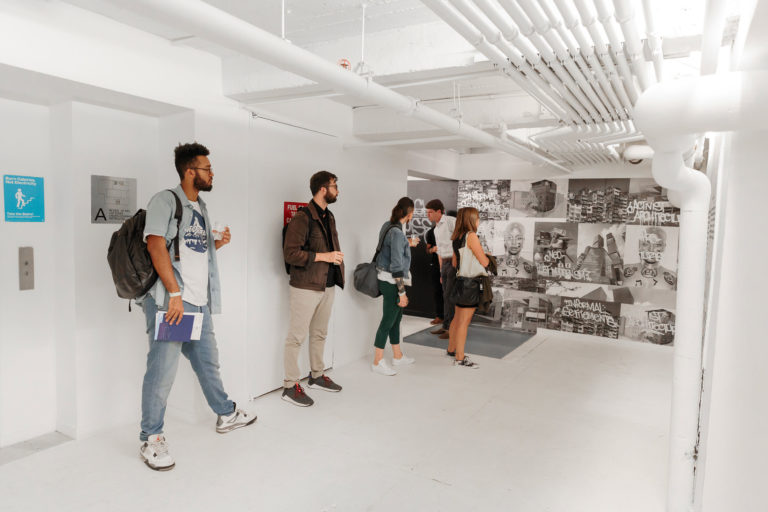Table of Contents
B-Sides
There are several modes of architectural production and discourse that are worthy of mention in the exhibition proper, though, it must be said, they are only tangentially relevant to Hip-Hop Architecture. These include Neo-Postmodernism, Afro-Futurism, Activist Architecture, Informal Settlements, and Deconstructivism. The relevance of each is outlined and discussed in this section.
Neo-Postmodernism
Though Neo-Postmodernism is not a widely recognized design movement, there has been much discussion among architectural academics over the last several years—in journal publications, public lectures, and across the architectural blogosphere—about the reemergence of Postmodernist ideas and methods. Evidence of this trend can be found in the work of photographers Filipe Dujardin and Xavier Delory, in the representations and objects by young designer practices like Norman Kelley and Jimenez Lai, in the work of curators and provocateurs of the now-dissolved architecture group FAT (Fashion Architecture Taste), and in recent buildings by WAM Architecten. The Post-Modernist Postmodernist tendencies to sample historic archetypes and incorporate external references are present in its revival. Their conscious or subconscious tendencies to use hip-hop techniques (mash-ups, remixes, samples) connect the Neo-Postmodernists to the prominence of hip-hop culture during their formative years.
Afro-Futurism
Wakanda, the fictional city depicted in the 2018 film Black Panther, brought the world of Afro-Futurism to international film audiences. Imagining an African evolution without colonialism required the referencing and collaging of various indigenous cultures across the continent. A parallel process occurred at the birth of hip-hop culture when, deprived of any authentic representation of self within the city, Black and Latino youths referenced several disparate cultures in the creation of a new identity. The Universal Zulu Nation, a hip-hop cultural organization formed in the early 1970s by legendary DJ Afrika Bambaataa, was essentially an Afro-Futurist project. Contemporary hip-hop artists such as Andre 3000 and Erykah Badu have continued in Bambaataa’s Afro-Futurist tradition. James Garrett, Jr’s early explorations of Hip-Hop Architecture also resulted from a prompt to develop an Afro-Futurist vision for American cities.
Activist Architecture
Hip-hop initially evolved as a way to create a sense of fun and enjoyment in an urban environment that was starved of artistic expression. However, its power to illicit social change was quickly recognized and eventually exploited. This implicit connection between hip-hop and activism brings Hip-Hop Architecture in natural alignment with other forms of activist architecture. Recent work by Eyal Weisman of Forensic Architecture in Middle Eastern conflict regions and by Teddy Cruz along the U.S.-Mexico border evidence a similar approach and attitude to shaping disputed spaces as those found in Hip-Hop Architecture.
Informal Settlements
The very nature of any informal settlement—from Brazilian favelas, to Syrian refugee camps, to Burning Man—immediately invokes ideas closely related to those at the core of Hip-Hop Architecture. Ground-up rather than top-down development, use of found materials and non-traditional construction techniques, and an aesthetic rooted in dynamic temporality—all are shared traits of the two architectural forms.
Deconstructivism
In their invited lectures at Syracuse Architecture, both Craig Wilkins and Harry Allen reference Deconstructivism, a mid-1990s architectural movement that disassociated a building’s surfaces from its structure, when describing a potential Hip-Hop Architectural aesthetic. Wilkins describes Deconstructivism as “a critique of our decentered society” that “develops its own architecture.” The work of Eric Owen Moss or Thom Mayne of Morphosis deals with structure and materiality in ways very similar to the sampled and collaged sounds of hip-hop music. Allen also posits that the flowing nature of structural and cladding lines within Zaha Hadid’s buildings resemble the flowing lines of graffiti tags or the flow of an MC over breaks. Neither, however, arise from cultural, political, or economic conditions that are related to hip-hop in any way. The connection between the two architectural movements, then, remains an aesthetic one.
